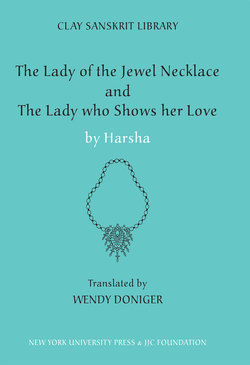Читать книгу The Lady of the Jewel Necklace & The Lady who Shows her Love - Harsha - Страница 17
Оглавлениеshastra’ (Artha/sastra), the ancient Indian textbook of politics. The fantasy of sneaking into the harem, for example, is part of a broader mythology of intrigue that the ‘Kama Sutra’ presents, a whole new erotic mythology that it creates by applying to sex the Machiavellian politics of the ‘Artha·shastra,’ composed perhaps a century, or less, before the ‘Kama Sutra’ (Doniger and Kakar 2002: xi–xiii). The ‘Kama Sutra’ explicitly refers to the ‘Artha·shastra,’ and the two texts have much in common. The ‘Kama Sutra’ tells you how to test married women, to detect a woman likely to commit adultery, in precisely the way that the ‘Artha· shastra’ tells you to test potential defectors, assassins, and so forth, how to detect suspicious characters. The list (in ‘Artha·shastra’ 1.14.2) of people in the enemy’s territory who are dissatisfied and can be seduced politically is the model for the lists (in ‘Kama Sutra’ 5.1.52–54) of women in their husband’s territory, as it were, who can be seduced sexually.
The ‘Artha·shastra’ advises the king to test his potential ministers of various departments to make sure they are impervious to the temptations of each of the three goals of life: dharma (religion), artha (power) and kama (desire) (1.10.3); he also tells him to test the candidate against a fourth power, fear. This then appears in the ‘Kama Sutra’ as just one test, the test of the guard for the harem, a four-fold test that also includes fear (5.6.40–42). The use of messengers in the ‘Kama Sutra’ parallels the employment of ambassadors and spies in the ‘Artha·shastra’ (1.16); the same word (duta) designates both messengers and spies. The internal debate of potential adulterers in the ‘Kama Sutra,’ persuading them- selves of the moral justice of their actions (1.5.4–20), mirrors ________
